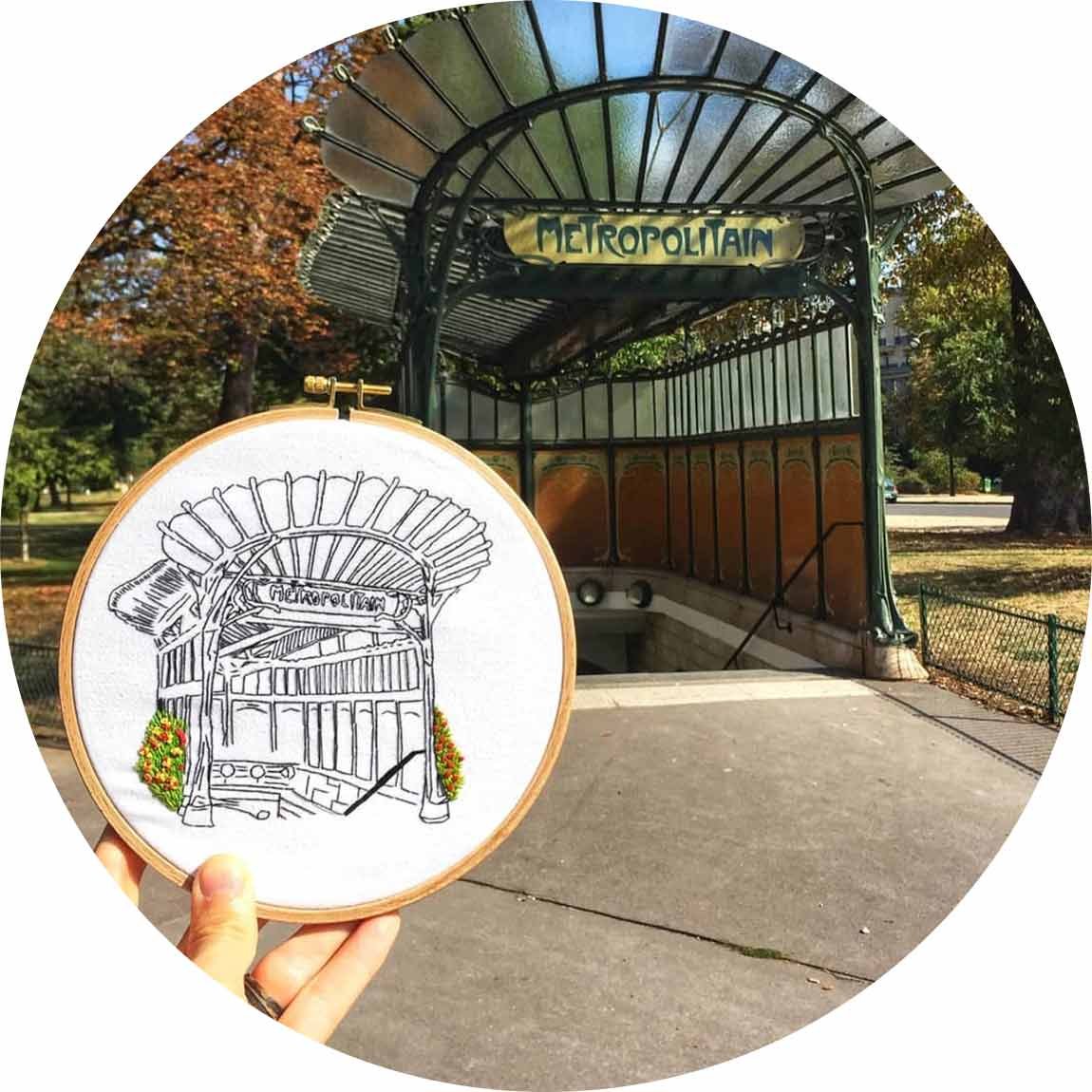Metropolitan of Paris 🇫🇷
This hand embroidery pattern of Metropolitan of Paris fits perfectly into a hoop of 15cm (6") or larger. The pattern will be sent to your email as an instantly downloadable PDF immediately after purchase.
The pdf also includes
🎨 colour guide
🔖 stitch guide
📖 general technique guide so that you can embroider the design with confidence.
This hand embroidery pattern of Metropolitan of Paris fits perfectly into a hoop of 15cm (6") or larger. The pattern will be sent to your email as an instantly downloadable PDF immediately after purchase.
The pdf also includes
🎨 colour guide
🔖 stitch guide
📖 general technique guide so that you can embroider the design with confidence.
This hand embroidery pattern of Metropolitan of Paris fits perfectly into a hoop of 15cm (6") or larger. The pattern will be sent to your email as an instantly downloadable PDF immediately after purchase.
The pdf also includes
🎨 colour guide
🔖 stitch guide
📖 general technique guide so that you can embroider the design with confidence.
Story of the Metropolitan of Paris design
The Metropolitan Paris embroidery pattern is the perfect design for Paris enthusiasts. The design is inspired by Metro Dauphine in the majestic 16th area of Paris. It was built in the late 1890's as a station on line 2, which makes it one of the first metro stations in the city.
The station opened 19 July 1900. There are currently eighty-six of the earliest metro stations that are still standing in Paris today. Some of them active such as the Metro Dauphine, while others have been abandoned since decades. When Charles was a teenager in the capital, it was a known game to look for the abandoned underground stations. As he says, there is a whole world beneath the city that we only know a fraction about!
Paris was one of the first cities in Europe to construct such an advanced underground railway system and the planning began already in the mid 19th century. Just as many of the other older stations, Metro Dauphine was inspired by Art Noveau. Imagine all the Parisians that have walked out of this magnificent entrance through the years! That if something gives envy to get stitching!
Embroidery stitches used in this pattern:
Back stitch
French knot
You can learn how to embroider the above techniques in this article or via our free video stitch library Going Knots .
Materials you need to complete this embroidery design:
🖼️ Cotton canvas (or any non-stretch and non-transparent cotton fabric such as Duck canvas 7oz)
🖼️ Embroidery hoop of 15cm (6")
🎨Embroidery needle (We love to use 1-5 Bohin France or DMC needles)
🧵 Embroidery floss (DMC colour codes are indicated on your pattern pdf)
✂️ Scissor
📝 Carbon paper for transfer (Alternatively solvy paper, iron-on pen or any other transfer method of your preference)
🖊️ Pointy ball point pen
📏 Optional: Small ruler
Here is an article with more information about the various materials that we use.
BONUSES
→ Included in your pattern pdf is a video tutorial on how to transfer our architectural hand embroidery designs with carbon paper.
→ Upon purchase you will also receive an invitation to our supportive Private Facebook community that is available only for stitchers of our designs and courses.
Learn more with online courses
Are you keen to dive deeper into the Architectural hand embroidery style?
Then you’d want to have a look at our in depth Architectural hand embroidery and thread painting courses on Charles and Elin Academy!
In addition to courses on Architectural designs we also offer other inspiring courses to support you on your exploration of modern hand embroidery.


